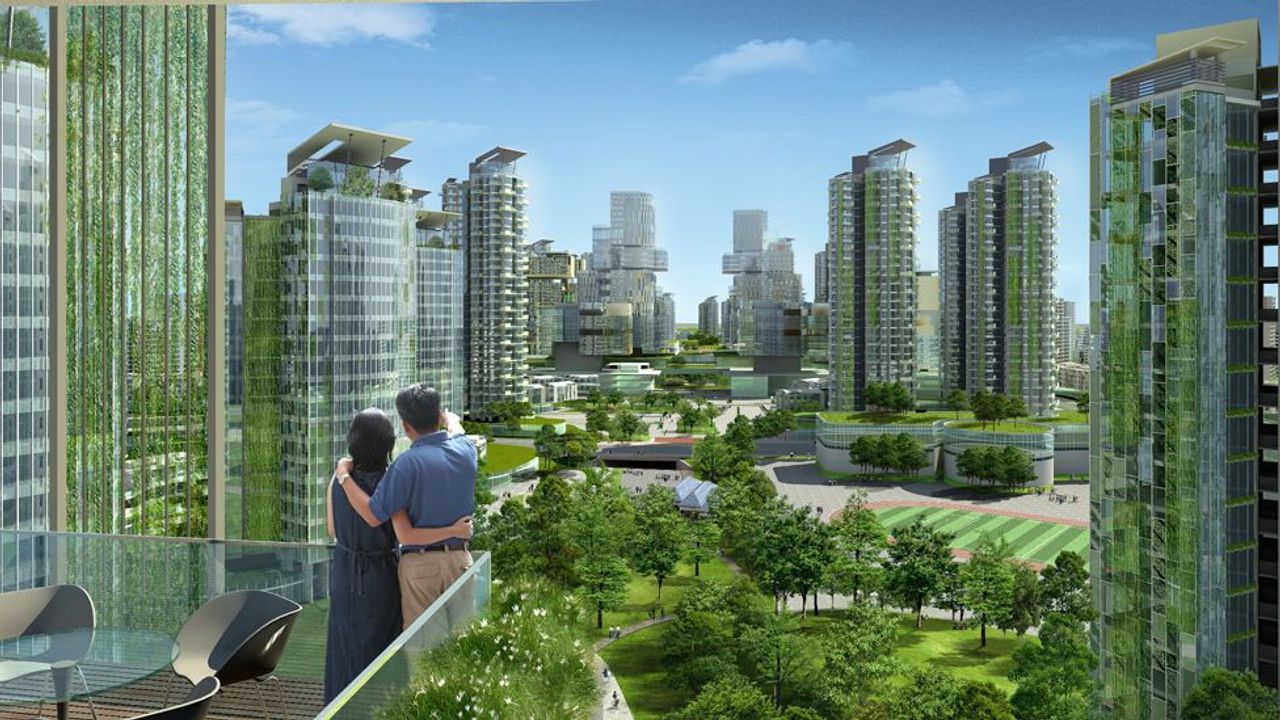In a world where rapid urbanization and environmental degradation are becoming increasingly problematic, innovative solutions that blend technology, sustainability, and human well-being are in high demand. One such solution is Real Moasis, a groundbreaking concept that promises to revolutionize the way we live, work, and interact with our environments. Combining the best aspects of eco-friendly design, green technology, and urban planning, Real Moasis is poised to reshape the future of cities, offering a sustainable model for urban living that could help address some of the most pressing issues facing modern society.
Real Moasis is not just a dream; it’s a tangible vision that seeks to create urban spaces that are both self-sustaining and in harmony with nature. From renewable energy sources to eco-friendly architecture, this concept represents the evolution of urban living, where the environment and humanity coexist symbiotically.
What Is Real Moasis?
At its core, Real Moasis is a vision for sustainable, self-sufficient urban environments that combine natural elements with advanced technology to create a harmonious, eco-friendly, and healthy living space. The term “Moasis” is a portmanteau of “moat” and “oasis,” suggesting a safe, thriving, and nurturing environment that is protected from the outside world’s challenges—such as pollution, climate change, and resource depletion.
The Real Moasis concept emphasizes several key pillars:
1. Sustainability
Sustainability is at the heart of the Real Moasis concept. These urban spaces are designed to be energy-efficient, water-efficient, and waste-free. By incorporating renewable energy sources like solar panels, wind turbines, and geothermal heating, Real Moasis developments can minimize their reliance on fossil fuels and reduce their carbon footprint. Similarly, rainwater harvesting systems, green roofs, and urban farming initiatives help reduce water consumption and provide local, organic food for residents.
2. Green Architecture
Real Moasis focuses on integrating natural elements into architectural design. The buildings are designed with green roofs, vertical gardens, and living walls that promote biodiversity and improve air quality. The incorporation of natural materials such as wood, bamboo, and recycled materials further enhances the sustainability of the structures. The goal is to create environments where residents can enjoy a healthy and vibrant lifestyle while minimizing their impact on the environment.
3. Smart Technology
Smart cities are becoming more prevalent, and Real Moasis takes this trend a step further by incorporating cutting-edge technology to optimize energy use, improve waste management, and enhance overall quality of life. Smart sensors and automated systems help monitor everything from air quality to water usage, ensuring that resources are used efficiently and responsibly. Artificial intelligence (AI) and machine learning algorithms are utilized to make real-time adjustments to energy systems, transportation, and waste management, contributing to the overall efficiency and sustainability of the urban environment.
4. Community and Well-being
A key aspect of the Real Moasis concept is fostering a sense of community and well-being. These urban spaces are designed to be walkable and bike-friendly, encouraging social interaction and physical activity. Parks, green spaces, and community gardens are integrated into the urban landscape, providing residents with opportunities to connect with nature and engage in outdoor activities. The emphasis on green spaces and communal areas creates an environment where individuals can relax, unwind, and recharge in a natural setting.
The Key Features of Real Moasis
Real Moasis is more than just a vision for eco-friendly cities; it’s a comprehensive model for how urban spaces can be designed and built to meet the needs of both the environment and the people who live in them. Here are some of the key features that define a Real Moasis:
1. Renewable Energy Infrastructure
One of the primary features of Real Moasis is its reliance on renewable energy sources. These cities are designed to generate their own energy through a combination of solar, wind, and geothermal power. Solar panels are integrated into the buildings, while wind turbines are strategically placed around the urban landscape. Geothermal systems can be used for heating and cooling, reducing the need for conventional heating and air conditioning systems.
In addition to renewable energy, Real Moasis also incorporates energy storage solutions, such as large-scale battery systems, to ensure a steady supply of power even during periods of low energy production. By making use of clean, renewable energy, Real Moasis can significantly reduce its reliance on fossil fuels and lower its carbon emissions.
2. Efficient Water Use and Management
Water scarcity is one of the most pressing challenges faced by cities around the world. Real Moasis addresses this issue by incorporating water-efficient technologies and systems. Rainwater harvesting systems are used to collect and store rainwater for irrigation, flushing toilets, and other non-potable uses. Water-efficient fixtures, such as low-flow faucets and showers, help reduce overall water consumption.
In addition to water conservation, Real Moasis incorporates advanced wastewater treatment systems that recycle water for reuse within the community. These systems help reduce the strain on local water resources and ensure that water is used in a responsible and sustainable manner.
3. Vertical Farming and Food Security
Food security is another critical issue that Real Moasis addresses through the integration of vertical farming and urban agriculture. By incorporating vertical farms and community gardens into the urban landscape, Real Moasis cities can produce fresh, local food for residents. This reduces the need for transportation of food from distant regions, cutting down on carbon emissions and promoting sustainable food production.
Urban farming initiatives also promote local economic growth by providing opportunities for residents to engage in agriculture and food production. These initiatives can be particularly beneficial in food deserts, where access to fresh produce is limited. By growing their own food, residents of Real Moasis cities can enjoy a healthier, more sustainable diet while reducing their environmental footprint.
4. Waste Management and Circular Economy
Real Moasis also promotes a circular economy, in which waste is minimized, and resources are reused and recycled. The cities are designed with integrated waste management systems that prioritize recycling, composting, and repurposing materials. Waste is sorted at the source, and composting systems are used to recycle organic waste into nutrient-rich soil for community gardens and vertical farms.
In addition to waste reduction, Real Moasis cities aim to minimize the environmental impact of construction and demolition. Buildings and infrastructure are designed with materials that are recyclable and can be repurposed, reducing the amount of waste sent to landfills.
The Future of Urban Living: Real Moasis in Action
As the world faces increasingly complex challenges related to climate change, resource depletion, and urbanization, the need for sustainable solutions has never been more urgent. Real Moasis represents a bold and visionary approach to urban living, one that prioritizes environmental sustainability, human well-being, and social equity.
The implementation of Real Moasis is still in its early stages, but several cities around the world are beginning to adopt aspects of this concept. In urban planning projects in places like Copenhagen, Singapore, and Vancouver, there is a growing trend toward creating green, sustainable cities that integrate renewable energy, water-efficient systems, and green spaces into the urban fabric.
These early examples provide a glimpse of what the future could hold for cities around the world. As more cities adopt sustainable design principles, the Real Moasis model could become the blueprint for the cities of tomorrow—places where people live in harmony with nature, powered by clean energy, and supported by advanced technologies that promote sustainability and well-being.
Challenges and Opportunities for Real Moasis
Despite its promising potential, the Real Moasis concept is not without its challenges. Building fully sustainable and self-sufficient urban environments requires significant investment in infrastructure, technology, and education. Moreover, there are logistical and regulatory hurdles that must be overcome to implement these systems on a large scale.
However, the opportunities offered by Real Moasis are immense. By embracing sustainability, technology, and community-oriented design, we can create cities that are not only more environmentally friendly but also more livable, equitable, and resilient. The Real Moasis model offers a blueprint for the future of urban living—one that is sustainable, healthy, and capable of adapting to the challenges of the 21st century.
Conclusion: A Vision for the Future
Real Moasis is more than just a concept; it is a roadmap for creating the cities of the future—cities where sustainability, technology, and human well-being are prioritized. By combining renewable energy, green architecture, smart technology, and community-focused design, Real Moasis offers a sustainable and harmonious model for urban living that could redefine the way we experience city life.
As urban populations continue to grow and the effects of climate change become more pronounced, initiatives like Real Moasis will be crucial in shaping a more sustainable and resilient future for our cities and the world as a whole. With the right investments, collaboration, and innovation, Real Moasis could become the blueprint for urban development in the decades to come.

